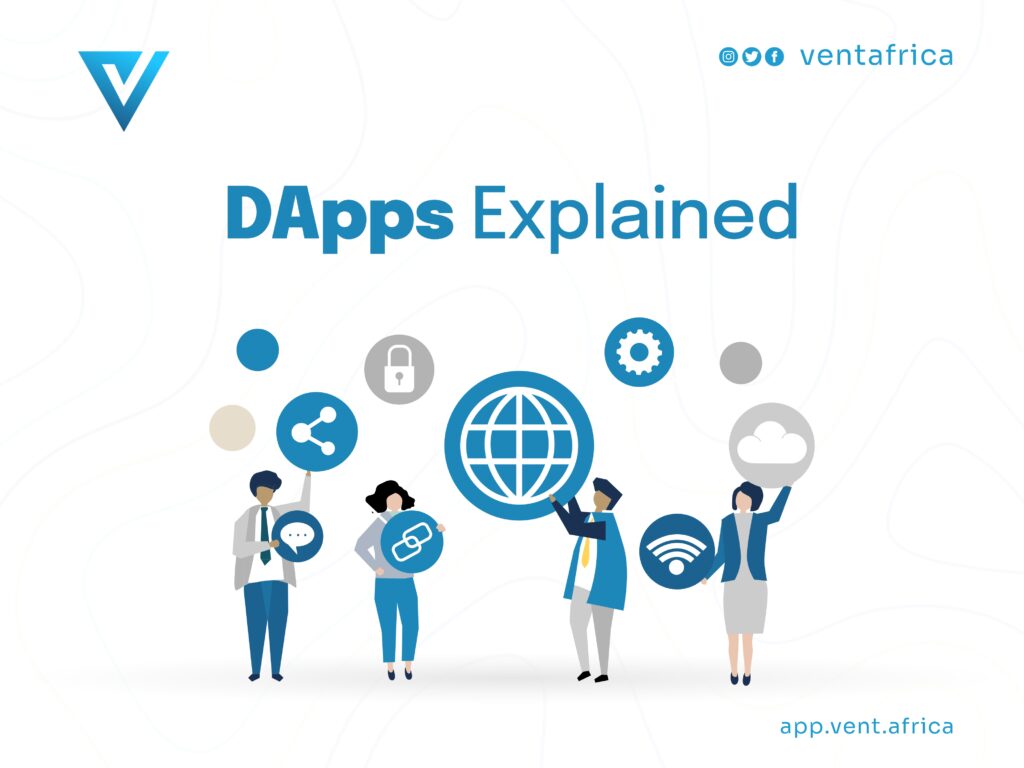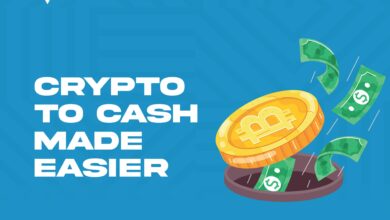Decentralised Applications (dApps) — Explained
Just as life evolves, technology continues to advance in various ways on a daily basis. One of the technological advancements in the recent decade has been the advent of decentralised applications. While similar to the conventional centralised applications in terms of the front end and the functions they offer, a key difference exists in the back end and the way they run. In this post, you’ll learn what decentralised applications are, how they differ from centralised applications, how they work, their benefits, and their demerits. Let’s dive in!

THE GIST
- Decentralised applications (dApps) are open-source software applications built on a decentralised network supported by a blockchain.
- While a centralised app runs on centralised servers and databases controlled by the owner, decentralised apps run on a peer-to-peer network of computers.
- DApps are supported by smart contracts that enforce the rules defined in the application’s code.
- The advantages of dApps include censorship resistance, the absence of downtime, and the freedom to build on the open-source code.
- DApps are faced with challenges in terms of security and low number of users.
WHAT ARE DAPPS?
A decentralised application (dApp or dapp) is a distributed open-source software application that operates without any one entity controlling it. Dapps are similar to conventional (centralised) apps supported on a website or mobile device. However, they are run on a peer-to-peer blockchain network using smart contracts instead of a single computer. Since the app is based on the blockchain, its data, and records are public.
The fact that dApps are decentralised and open-source means that once the developer has released its codebase, it can be built upon by others. As a result, the application cannot be controlled by a single entity. The major advantage of this is that dApps are always accessible and do not have a single point of failure. Over the years, decentralised applications have been developed for various purposes, such as web browsing, gaming, DeFi, and social media.
HOW DO DAPPS DIFFER FROM CENTRALISED APPLICATIONS?
A single entity controls a centralised app. It runs on centralised servers and databases controlled by the owner. Users interact with the app by downloading a copy of the app through which data is sent and received from the company’s server.
While dApps are similar to conventional apps in terms of the front-end code, a dApp’s back-end code is different. A dApp runs on a blockchain or peer-to-peer network of computers. This makes it free from the control of a single entity. Users access the app with the use of cryptographic tokens. They can then interact directly with one another instead of relying on a central authority.

HOW DO DAPPS WORK?
Decentralised applications are supported by smart contracts that run on a blockchain — a decentralised and distributed digital ledger that records transactions across a network of computers. Instead of being stored in a central server, the dApp’s data records are stored in blocks. These data blocks are distributed, linked, and ruled by a cryptographic validation process.
The function of a smart contract is to enforce the rules defined in the application’s code and mediate transactions. Smart contracts consist of the back end only. In the development of a dApp, several smart contracts are usually combined.
WHAT ARE THE STRENGTHS OF DAPPS?
There are some benefits associated with dApps. First, dApps are censorship-resistant. Since no single authority controls the app, it is very difficult for governments, powerful or rich individuals, or even the original developers to control the network.
Since dApps run on a peer-to-peer system, they have no downtime, as there is no single point of failure. This means that a dapp will continue working even if individual nodes/computers forming part of the network go down.
The open-source nature of dapps encourages a wider development of the dapp’s ecosystem. Building on the source code, developers can fork better and more useful dapps.

WHAT ARE THE WEAKNESSES OF DAPPS?
One major problem point for dApps is that they are prone to hacks. Since the source code is open to the public, hackers can easily examine the code and search for weaknesses in the network. As a result, there have been some major hacks over the years. For instance, $611 million was stolen from Poly Network in 2021; $552 million from Axie Infinity’s Ronin in 2022. According to DappRadar, $1.2 billion was stolen in hacks in the first quarter of 2022 alone.
The more users a dapp has, the more effective its network is. However, many dApps struggle due to a low number of users. This makes the app less interactive and can even make it less secure, as a dapp’s security often depends on user numbers.
FINAL VERDICT
Dapp development is relatively recent. As we’re still in the early stages, it is normal that there are some associated challenges, mostly in terms of security and UI/UX. For dApps to gain mainstream adoption, developers and the networks on which dapps are built must provide solutions to these challenges. Nevertheless, with thousands of dApps offering various services being developed daily, it is clear that the dawn of the dApp revolution will soon be upon us.
CONVERT YOUR CRYPTO TO CASH WITH AFRICA’S MOST RELIABLE OFF-RAMP PLATFORM
Vent Africa is a reputable off-ramp platform that makes crypto-to-cash transactions more effortless than ever. With the best rates at no fees and your security guaranteed, there’s no better choice for transacting crypto smoothly than Vent Africa.
Read more: 5 Reasons to Trade with Vent Africa.

